Diffractions
The cabinet shape with the tilted edges is inspired by a scientific article of Harry Olson in the Journal of Audio Engineering Society in 1969, called "Direct Radiator Loudspeaker Enclosures". Edges of a cabinet reflect sound, creating secondary sound sources, affecting the response as shown in the following figure.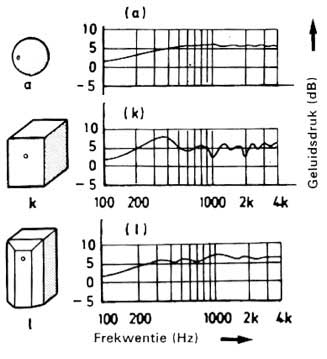
An ideal shape would be a sphere, but this is not practical and doesn't fit in most decorations. A square box is pretty bad. A box with curved sides and corners approaches the response of a sphere.
Measurements on the tweeter show that it suffers from diffraction to its own enclosure. The diameter of the tweeter enclosure is about 8cm. A dip is expected at 344 / 0.08 = 4.3kHz, a peak at 8.6kHz.
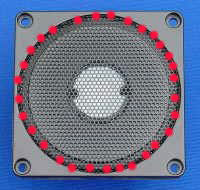
The following measurement shows the difference between a near-field measurement and a "far-field" measurement. The near-field measurement has an almost flat response curve, whereas the "far-field" measurement shows the expected dip at about 4.3kHz and peak at 8.6kHz.
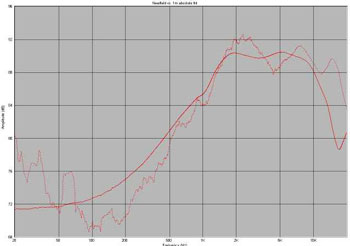
This can be considered a design flaw of Thiel, because flattening the basket would have solved the problem. One way to decrease the effect, is to apply felt. The best place would be just underneath the metal grill, but because the grill is glued this place is unreachable without damaging the unit. We therefore have created some felt, one in the same shape as Avalon. The photo shows an experimental version.
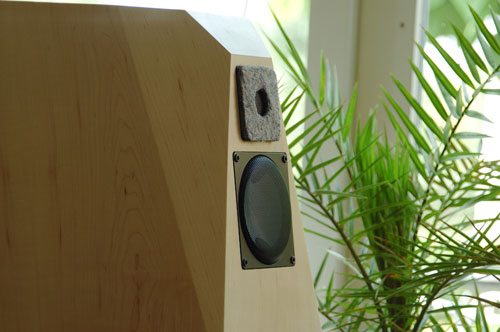
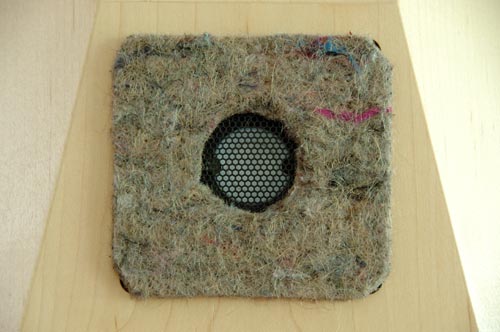
The following figure shows some measurements with (bold) and without (normal) felt, confirming that the effect of the diffraction becomes less. Although the felt suppresses the presence range (2khz-4kHz), and the treble region 4kHz-10kHz), it hardly affect the region above 10kHz. This means that felt causes a relative increase of the upper treble, causing a zizz and sibilance to the sound, which is difficult to compensate in an electrical filter. Therefore, in the final version, no felt is being used.
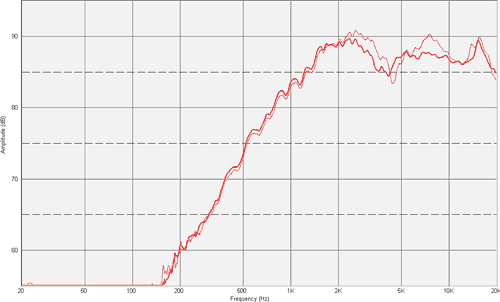
next ->